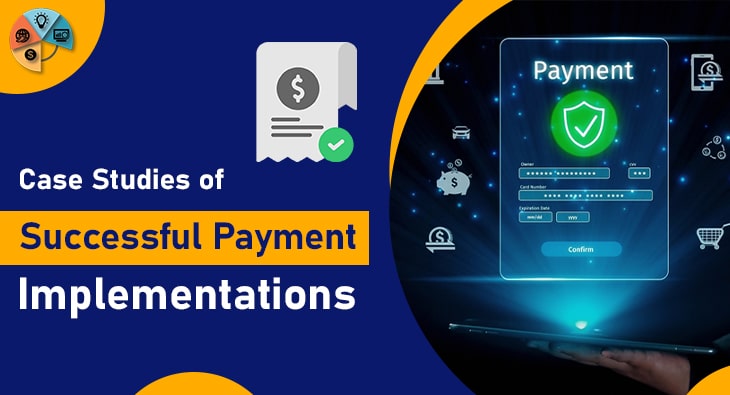In today’s fast-paced digital economy, businesses are increasingly seeking efficient and reliable payment solutions to meet their customers’ demands. Payment implementation case studies showcase how various organizations have successfully integrated innovative payment systems, streamlining their operations and enhancing customer experiences. These real-world examples highlight the challenges faced during the implementation process, the strategies employed to overcome them, and the resulting benefits. By examining successful payment solutions, companies can gain valuable insights into best practices and the potential pitfalls to avoid. Whether it’s a small startup or a large enterprise, understanding these case studies can empower businesses to make informed decisions and optimize their payment processes, ultimately driving growth and customer satisfaction.
Introduction to Payment Implementation Success
In the ever-evolving landscape of digital commerce, the successful implementation of payment systems has become a cornerstone for business growth and customer satisfaction. Payment implementation success involves more than just adopting new technologies; it requires a strategic approach that aligns with the unique needs of the business and its customers. Companies must consider various factors such as user experience, security, multi-currency support, and data analytics to ensure their payment solutions are not only efficient but also scalable and adaptable to future market demands.
One of the key aspects of successful payment implementation is the ability to streamline user experience, making the payment process as seamless and intuitive as possible. This involves optimizing the payment interface, reducing transaction times, and ensuring compatibility across different devices and platforms. Additionally, robust security measures are essential to protect sensitive customer data and build trust, which is crucial for retaining customers and encouraging repeat business.
Integrating global payment options is another critical factor, especially for businesses aiming to reach international markets. This requires supporting multiple currencies and payment methods, ensuring compliance with local regulations, and providing localized customer support. Leveraging data analytics can further enhance the implementation process by offering insights into customer behavior, transaction patterns, and areas for improvement, enabling continuous optimization of payment systems.
Some Related Blogs
- The Importance of Payment Integration with Accounting Systems
- Understanding Payment Trends in Niche Markets
- The Future of Contactless Payments
- Navigating Cross-Border Payments and International Transactions
Streamlining User Experience for Increased Conversion
One of the pivotal factors in achieving successful payment implementation is optimizing the user experience to boost conversion rates. A streamlined payment process can significantly reduce cart abandonment and enhance customer satisfaction. Simplifying the payment interface with a clean and intuitive design helps users navigate the process effortlessly. Offering multiple payment options, such as credit cards, digital wallets, and buy-now-pay-later services, caters to diverse customer preferences and increases the likelihood of completing transactions.
Reducing the number of steps required to finalize a purchase is another effective strategy. Features like one-click purchasing, guest checkout, and auto-fill for billing and shipping information can speed up the transaction process, making it more convenient for users. Mobile optimization is equally crucial, as a growing number of consumers are making purchases via smartphones and tablets. Ensuring that the payment process is seamless across all devices can help capture a broader audience.
Additionally, providing clear and transparent information about fees, shipping costs, and delivery times during the checkout process can alleviate any uncertainties that might deter customers from completing their purchases. Real-time customer support, available through chatbots or live agents, can also address any issues promptly, enhancing the overall user experience.
Enhancing Security Measures to Build Customer Trust
In the realm of payment implementation, robust security measures are vital to protecting sensitive customer data and fostering trust. Employing advanced encryption protocols ensures that transaction information is securely transmitted, reducing the risk of data breaches. Multi-factor authentication (MFA) adds an extra layer of security by requiring users to verify their identity through multiple methods, making it significantly harder for unauthorized parties to gain access. Regularly updating software and systems to patch vulnerabilities is crucial in defending against emerging threats.
Compliance with industry standards and regulations, such as PCI DSS (Payment Card Industry Data Security Standard), helps maintain a high level of security and builds confidence among customers. Tokenization, which replaces sensitive card information with unique identifiers, further mitigates the risk of data exposure during transactions. Additionally, implementing fraud detection tools can identify and flag suspicious activities in real-time, allowing for prompt response and mitigation.
Transparency about security practices also plays a key role in establishing trust. Informing customers about the measures in place to protect their information and offering guidance on safe online behaviors can enhance their confidence in using the payment system. Educating staff on security protocols and conducting regular audits are also essential components in maintaining a secure payment environment.
Integrating Multi-Currency and Global Payment Options
As businesses expand globally, the need for multi-currency and global payment options becomes paramount. Supporting multiple currencies allows customers to make purchases in their local currency, enhancing their shopping experience and increasing conversion rates. Businesses must ensure that their payment systems can handle various international payment methods, such as credit cards, bank transfers, and popular digital wallets specific to different regions.

To achieve seamless integration, it is essential to partner with payment processors that offer extensive global reach and comply with local regulations. This ensures not only smooth transactions but also adherence to regional financial laws and standards. Additionally, providing localized customer support can address any payment-related issues promptly and efficiently, fostering trust and satisfaction among international customers.
Dynamic currency conversion (DCC) is another feature that can be integrated, allowing customers to view prices and complete transactions in their preferred currency. This transparency helps to build confidence and reduce the hesitation that can occur when dealing with foreign currencies. Businesses should also consider implementing tools for automatic tax calculation and customs handling to further streamline the purchasing process for international buyers. By embracing these strategies, companies can effectively tap into global markets, driving growth and expanding their customer base.
Leveraging Data Analytics for Continuous Improvement
Leveraging data analytics is crucial for the continuous improvement of payment systems, enabling businesses to make data-driven decisions and optimize their processes. By analyzing transaction data, companies can gain insights into customer behavior, such as preferred payment methods, peak transaction times, and common pain points during the checkout process. This information helps identify areas for improvement and tailor the payment experience to better meet customer needs.
Advanced analytics tools can also predict trends and detect anomalies, allowing businesses to proactively address potential issues before they escalate. For example, analyzing decline rates can uncover problems with specific payment methods or identify patterns that may indicate fraud.
Additionally, segmenting data by demographics or geographic locations provides a deeper understanding of customer preferences and behavior across different markets. This segmentation enables businesses to customize their payment solutions, offering targeted promotions and payment options that resonate with specific customer groups.
Data analytics can further enhance security measures by identifying suspicious activities and potential threats in real-time, thereby mitigating risks and protecting customer information. By continuously monitoring and analyzing payment data, businesses can stay ahead of market trends, improve operational efficiency, and deliver a seamless and secure payment experience.
![]()
Email us anytime!
Email customer service 24/7
![]()
Call us anytime!
Reach customer care 24/7 at +1 (727) 330-3944



One thought on “Case Studies of Successful Payment Implementations”
Comments are closed.